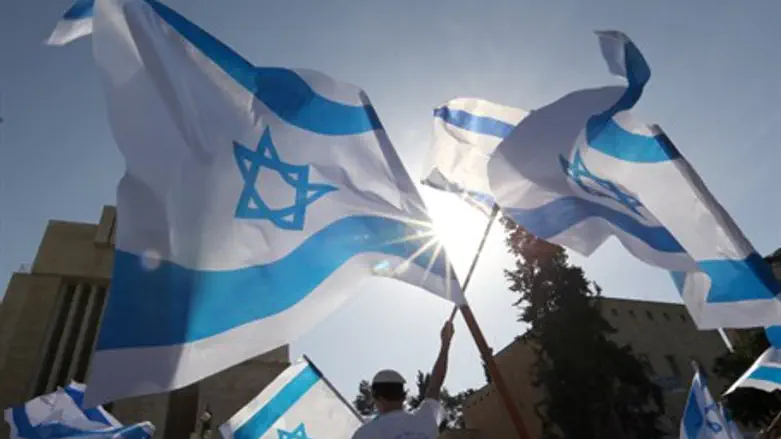
Once a year, when the re-birth of spring is at its peak (the 5th of Iyyar, according to Hebrew calendar), the State of Israel celebrates its Independence Day. The flags, picnics, clothes and parades are ways of expressing national pride in the fulfillment of the Zionist dream of a Jewish State in the Land of Israel after almost 2,000 years. On this day, we're proud to be Israelis, but the question remains, just how free are we?
The national Jewish paradigm for freedom is, of course, the story of Passover, zman heiruteinu. According to the most ancient prototype of the Passover Haggadah, found in the text of the Mishna edited over one thousand eight hundred years ago, the story of the Exodus told at the Seder must conclude with the verse (Deuteronomy 26), “He brought us to this place and gave us this land, a land flowing with milk and honey.” It seems the ultimate goal of the Exodus from Egypt was directly related to becoming a free and sovereign nation in our own land, the Land of Israel.
Interestingly, by the seventh century CE, this last line of the Haggadah is missing! Instead, it is replaced by the words: “Now we are here, next year we shall be in the Land of Israel; now we are slaves, next year we shall be free”. By that time, Jewish sovereignty in our own land was no more than a distant memory and most Jews lived under various foreign rulers of the Christian Byzantine and expanding Islamic empires. At different times and places during the long exile, we experienced varying degrees of autonomy, yet as long as Am Yisrael was scattered among the nations, the Exodus from Egypt was unfulfilled.
Today, that has changed. With the establishment of an independent state in the Land of Israel, “next year” has arrived. In that sense, Yom HaAtzmaut, is seemingly the final step in the final fulfillment of the historical journey that began in Egypt and lasted for two millennia. So why hasn't the text been changed? Why on the night to celebrate freedom do we still call ourselves "slaves"?
While Passover is indeed the story of the Jewish people’s liberation from slavery, it was largely an external process, however internally they were still slaves to Egypt, until Har Sinai. The Hassidic master R. Yehudah Leib Alter of Ger (Sfat Emet) explains that Sinai follows the Exodus because "the purpose of all the mitzvot is so that every person of Israel be free." Revelation follows liberation because while freedom might have been initiated at the Exodus, it is only completed at Sinai. (Hence, we count the 50 days between Passover and Shavuot).
Only after the Jewish people had received the Torah was the next step to be the conquest and settlement of the Land of Israel, as the means to freely create a society based on these God-given laws and values, and to ultimately serve as a model for the rest of humanity, "a light unto the nations."
The modern attempt to re-establish the nation in its ancestral homeland came from a significantly different perspective. For secular Zionists, having lived for so long under foreign rule, true freedom meant an independent state of their own, to live in peace and prosper, and no doubt, sixty six years later the physical rebuilding of the land has been a miraculous success. Today, Israel is the largest immigrant-absorbing nation on earth, home to more than half of world Jewry (In 1900 only 0.5% of the Jews in the world were in Israel), and together the once desolate Land has blossomed into thriving, world leading epicenter of medicine, science, innovative technology, business and education.
At the same time, in relation to the world, Israel often reflects a slave mentality, deeply ingrained from 2,000 years of subservience, of which "Egypt" is the paradigm, and ironically, it is specifically our political autonomy which currently most exposes it. Perhaps there is a hidden message in the fact that Israeli Independence day falls right in the middle of the intermediate period between Passover and Shavuot - the Exodus from Egypt to receiving the Torah at Mt Sinai. It’s all part of the same story and the same destiny on the road to true and complete independence.
